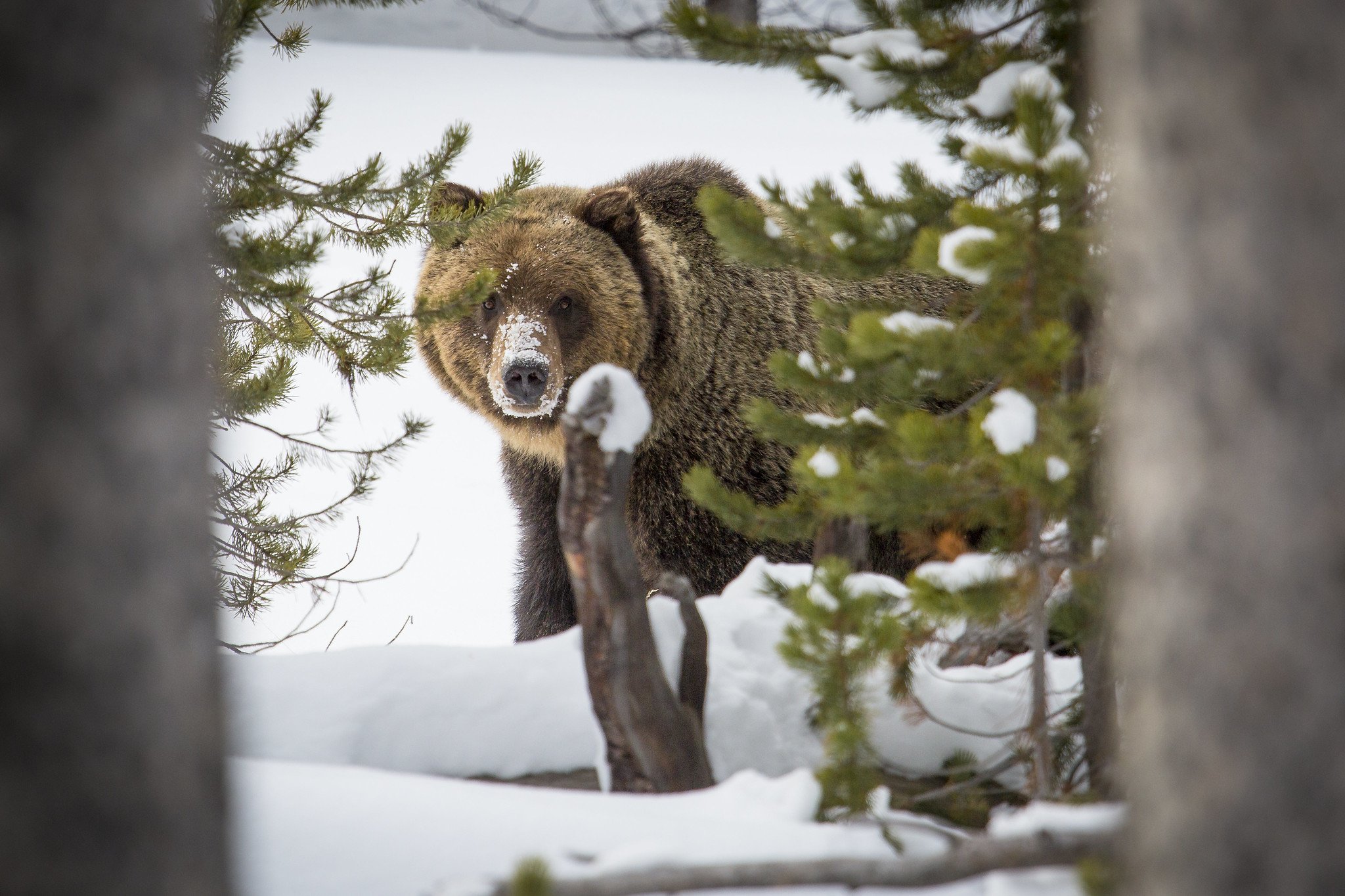Restoring forest habitat for grizzly bears and other wildlife
Grizzly bears are perhaps the most iconic symbol of a wild Yellowstone. As a large and wide-ranging omnivore, they play a vital role in a well-balanced ecosystem.
Grizzly Bears are large, wide-ranging omnivores that need secure habitat throughout Greater Yellowstone in order to survive and thrive. GYC and partners are working to keep bears wild and people safe across five national forests. (Photo NPS/Neal Herbert)
Despite their importance to the ecosystem, grizzly bears were near extinction in Greater Yellowstone in the mid-twentieth century. It took decades of persistent work—and millions of dollars—from many organizations, agencies, and wildlife advocates to restore this important species. Today, the Greater Yellowstone Coalition is continuing to ensure Yellowstone grizzly bears remain wild and have adequate, secure habitat within Greater Yellowstone. With both the human and bear populations in the region on the rise, it’s more critical than ever that we think creatively and work proactively toward sharing the landscape.
Decades of research has shown that one of the biggest predictors of bear mortality is the proximity of human development, such as roads that bisect bear habitat. Bear survival rates improve in correlation to factors like elevation and remoteness, suggesting secure habitat is key to bears’ ability to thrive.
To ensure grizzlies have what they need in order to survive in our region, GYC has partnered with the U.S. Forest Service on an innovative restoration effort designed to provide more secure habitat for bears. The partnership involves a review of all five national forests surrounding Yellowstone National Park with a goal of identifying and subsequently decommissioning illegal, unnecessary, or unsuccessfully closed roads and restoring the roadbeds back to a natural state. The roads are prioritized for restoration according to their potential to benefit grizzlies and other wildlife. The partnership is helping the forests tackle a backlog of projects while providing more secure habitat for the region’s iconic wildlife.
One of the sites on the Caribou-Targhee National Forest where a closed road is being restored back to its natural state, providing more secure habitat for grizzly bears and other wildlife. (Photo GYC/Kristin Kuhn)
In order to ensure the best possible outcome for wildlife, GYC and the Forest Service are each investing $125,000 in the project annually. This partnership allows the Forest Service to effectively and efficiently return parts of the forest back to its natural condition while also pursuing a multitude of other much-needed projects while construction crews are present.
Caribou-Targhee National Forest was first to complete its assessment and started restoration work in 2021. As part of the process, we actively engaged with a wide range of community members to keep them informed of the effort and its timeline.
After two field seasons, road crews have restored over 160 miles of roads, creating more than 64,000 acres of secure habitat as a result. They recontoured roadbeds to a more natural slope, placed groundcover to mimic natural vegetation, replaced old culverts, fixed stream channels, installed rock barriers to protect project sites from illegal use, and replaced or bolstered gates. It is a massive undertaking with powerfully transformative results. One of the reasons this work is so impactful is that for each road mile decommissioned and returned to a natural state, 400 acres of habitat are made secure for wildlife. Areas that once represented a potential source of mortality for bears and other forest inhabitants are now once again vital habitat that can support a wide variety of species.
As part of this partnership, we worked with agency staff to inform community members about the project, timeline, and benefits to wildlife and people. (Photo GYC/Kristin Kuhn)
We couldn’t be more pleased with this partnership and the results it has achieved so far. And we’re looking forward to continuing this work next summer, likely on the Custer Gallatin National Forest. From the leaders who created the vision, to the donors who helped fund it, to the community members who engaged with us, to the construction crew who did the work—thank you for your efforts to restore forest habitat for grizzly bears and other iconic wildlife in Greater Yellowstone.
—Kathy Rinaldi, deputy director of conservation
The Greater Yellowstone Ecosystem is the land of 49+ Indigenous Tribes who maintain current and ancestral connections to the lands, waters, wildlife, plants, and more.




